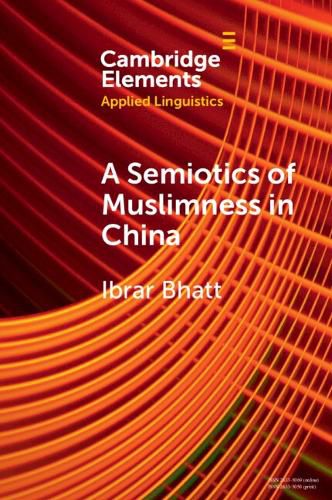Readings Newsletter
Become a Readings Member to make your shopping experience even easier.
Sign in or sign up for free!
You’re not far away from qualifying for FREE standard shipping within Australia
You’ve qualified for FREE standard shipping within Australia
The cart is loading…






This Element examines the semiotics of Sino-Muslim heritage literacy in a way that integrates its Perso-Arabic textual qualities with broader cultural semiotic forms. Using data from images of the linguistic landscape of Sino-Muslim life alongside interviews with Sino-Muslims about their heritage, the author examines how signs of 'Muslimness' are displayed and manipulated in both covert and overt means in different contexts. In so doing the author offers a 'semiotics of Muslimness' in China and considers how forms of language and materiality have the power to inspire meanings and identifications for Sino-Muslims and understanding of their heritage literacy. The author employs theoretical tools from linguistic anthropology and an understanding of semiotic assemblage to demonstrate how signifiers of Chinese Muslimness are invoked to substantiate heritage and Sino-Muslim identity constructions even when its expression must be covert, liminal, and unconventional.
$9.00 standard shipping within Australia
FREE standard shipping within Australia for orders over $100.00
Express & International shipping calculated at checkout
This Element examines the semiotics of Sino-Muslim heritage literacy in a way that integrates its Perso-Arabic textual qualities with broader cultural semiotic forms. Using data from images of the linguistic landscape of Sino-Muslim life alongside interviews with Sino-Muslims about their heritage, the author examines how signs of 'Muslimness' are displayed and manipulated in both covert and overt means in different contexts. In so doing the author offers a 'semiotics of Muslimness' in China and considers how forms of language and materiality have the power to inspire meanings and identifications for Sino-Muslims and understanding of their heritage literacy. The author employs theoretical tools from linguistic anthropology and an understanding of semiotic assemblage to demonstrate how signifiers of Chinese Muslimness are invoked to substantiate heritage and Sino-Muslim identity constructions even when its expression must be covert, liminal, and unconventional.